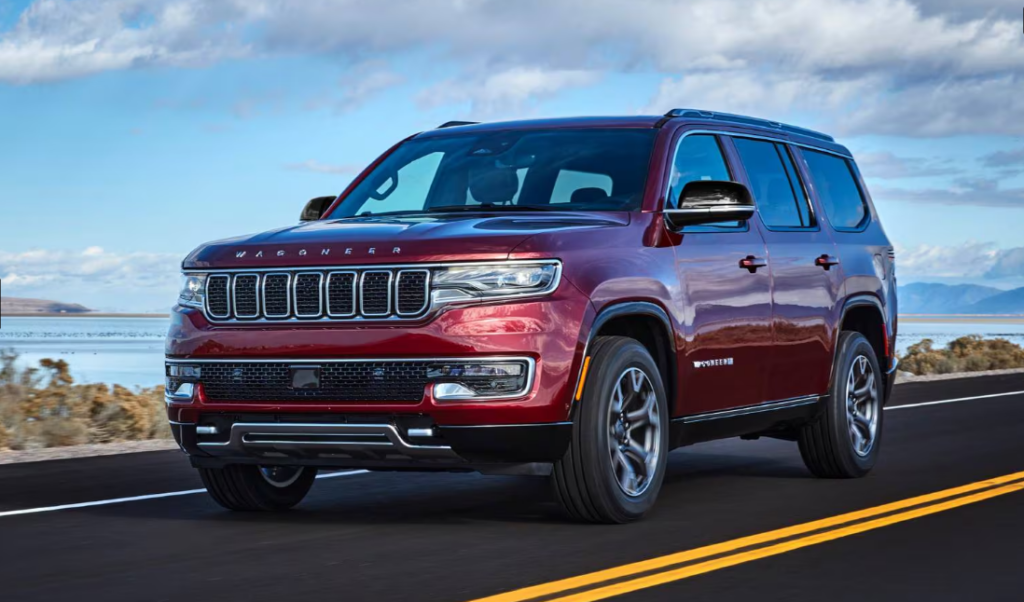
Overview
The 2024 Jeep Wagoneer and its extended version, the Wagoneer L, offer ample space and a hint of off-road capability in the full-size SUV segment, with pricing starting at $62,545. Catering to families seeking generous accommodations for up to eight passengers, alongside substantial cargo capacity, particularly in the elongated L variant, the Wagoneer lineup presents an enticing option for large families, particularly those with a penchant for outdoor adventures. Representing the newest entrants in the segment, the standard and extended-length versions debuted recently, showcasing Jeep’s meticulous approach to entering this competitive class. Despite its delayed entry, the Wagoneer models impress with their poised demeanor, refined interior, comfort, expansive cabin, and off-road prowess, challenging the longstanding dominance of vehicles like the Chevrolet Tahoe and Suburban. For those seeking a more luxurious experience, the upscale Jeep Grand Wagoneer offers a separate review.
What’s New for 2024?
Jeep has opted to replace the 5.7-liter V8 engine found in last year’s base Wagoneer, transitioning the entire range to rely on a robust turbocharged 6-cylinder engine.
2024 Jeep Wagoneer Models and Pricing
The base model of the 2024 Jeep Wagoneer starts at $62,545, featuring rear-wheel drive in its standard-length body. Opting for the long-wheelbase version or 4-wheel drive entails an additional $3,000 each. However, all Wagoneer L variants come with 4WD, except for the base trim. Additionally, 4WD is standard in the Series III models.
| 2024 Jeep Wagoneer | MSRP |
| Wagoneer | $62,545 |
| Wagoneer Series II | $68,340 |
| Wagoneer Carbide | $72,035 |
| Wagoneer Series III | $78,840 |
| Wagoneer L | $65,545 |
| Wagoneer L Series II | $74,340 |
| Wagoneer L Carbide | $78,035 |
| Wagoneer L Series III | $81,840 |
Spacious Interior
Seating for eight passengers comes standard in both the 2024 Wagoneer and its longer counterpart, the Wagoneer L. Opting for a pair of optional captain’s chairs in the second row enhances comfort but reduces the seating capacity to seven.
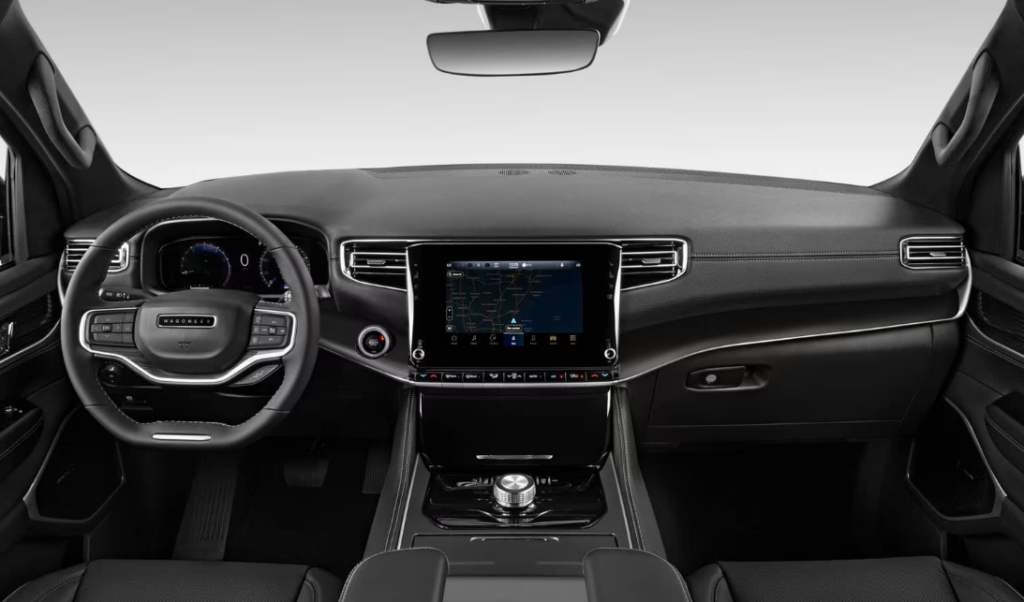
Despite the Wagoneer L’s lack of additional passenger space compared to the standard-length version, this is hardly a drawback. With a 6-foot individual comfortably seated in the front row, another of the same height can sit at ease in the second row, followed by yet another in the third row. The second-row legroom measures a spacious 42.7 inches, while the third row offers 36.6 inches.
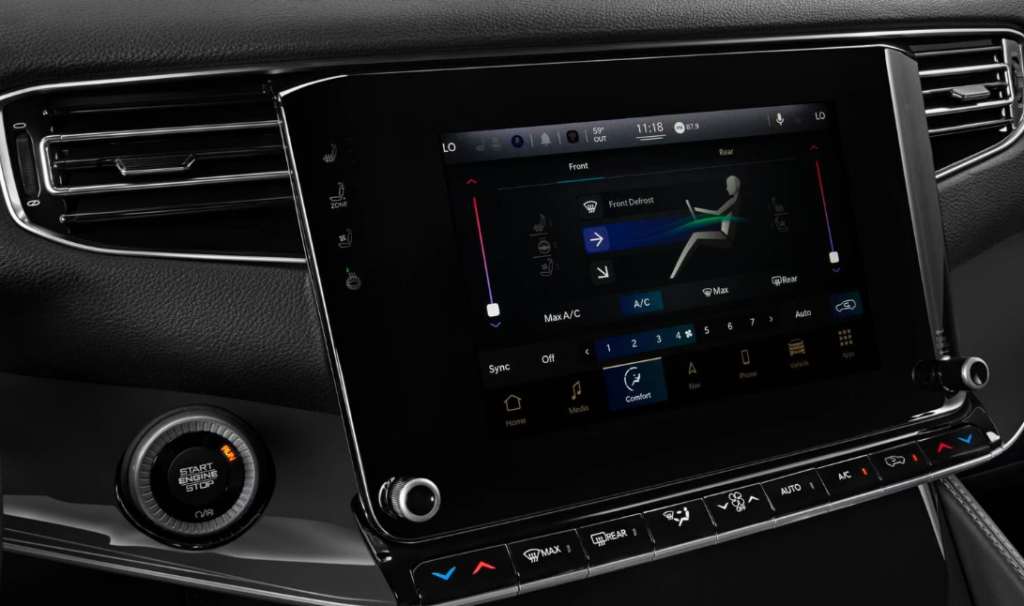
In the front cabin, Jeep has kept the controls and switchgear neatly organized. Despite the availability of three screens (including one for the front passenger), the interior ambiance leans more toward warmth than clinical tech.
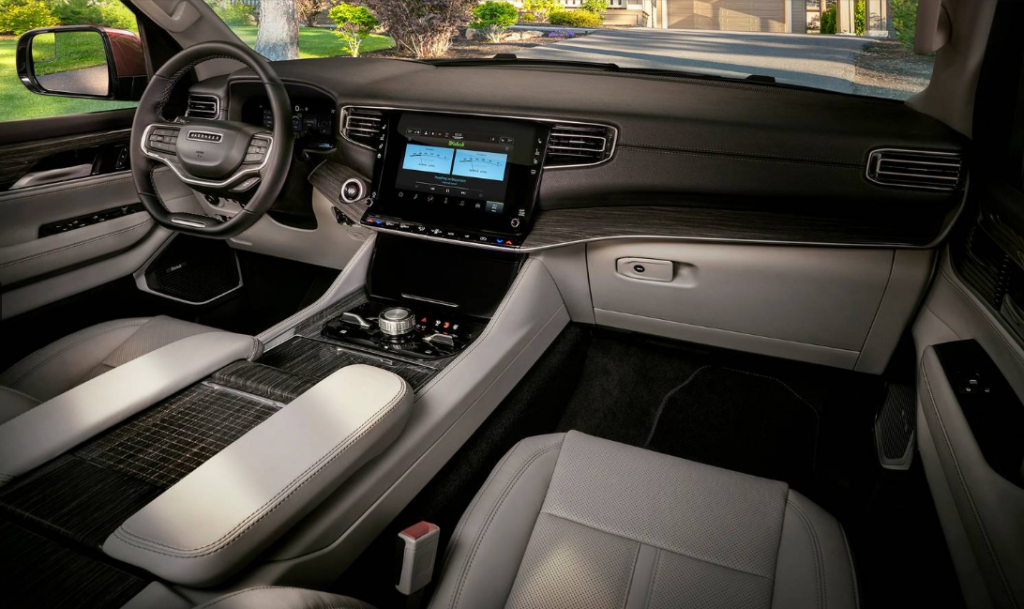
The cabin exudes luxury, starting with standard leather seating surfaces at the entry level, which only improve in quality with higher trims. Standard features include eight-way power-adjustable front seats with memory settings for the driver. Additionally, the Wagoneer L boasts a couple of 1.8-liter storage compartments for third-row passengers.

The extended Wagoneer L shines in cargo space, offering nearly 16 cubic feet more than its standard-length counterpart. This translates to 44.2 cubic feet behind the third row, 88.8 cubic feet behind the second row, and a generous 130.9 cubic feet behind the front seats. According to Jeep, accommodating a 4-by-8 sheet of plywood poses no challenge. For comparison, the cargo space in a Chevy Suburban ranges from 41.5 to 144.7 cubic feet.
Characterful Exterior
Jeep’s signature rugged styling gives the Wagoneer duo a distinctive character that sets them apart from their Ford and General Motors counterparts.
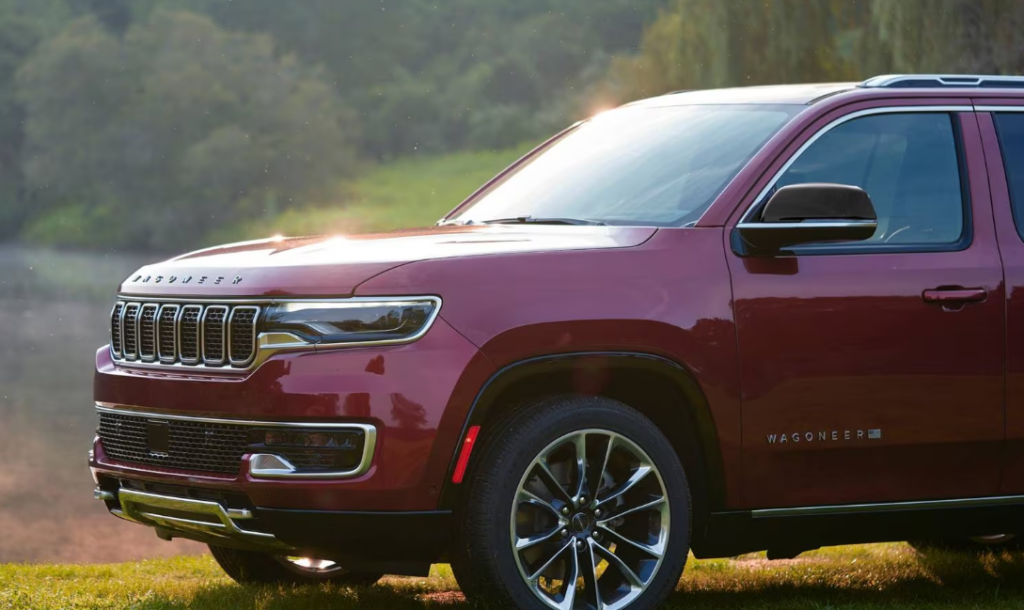
This personality is further emphasized in the Wagoneer L, which boasts an impressive length of 19 feet, providing a significant 12-inch advantage over its non-L counterpart.
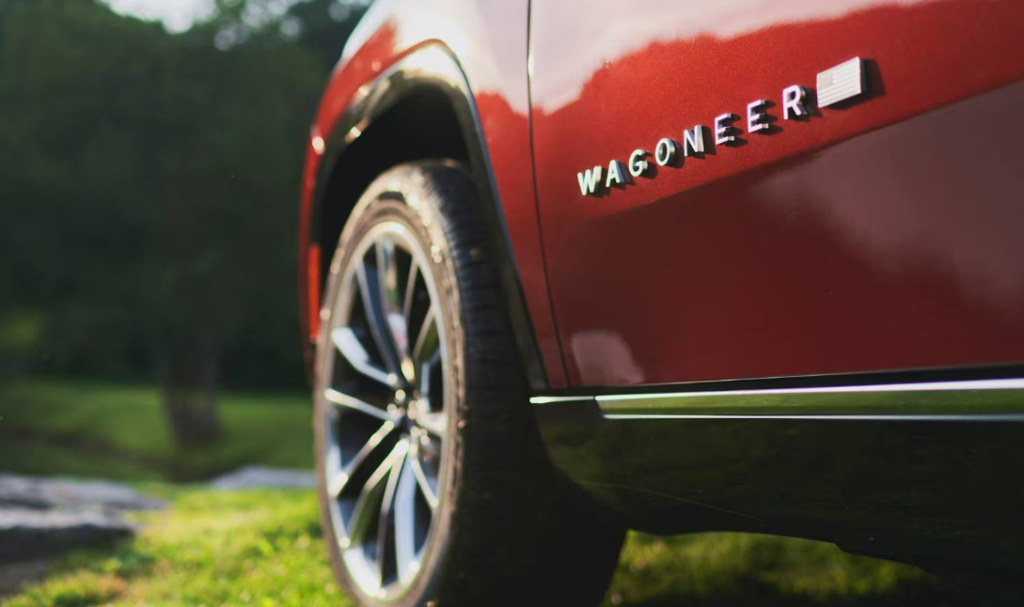
However, this elongated profile can make it more cumbersome to navigate in parking situations. Therefore, if the extra space isn’t necessary, opting for the “short” version is advisable (even though it still surpasses the Tahoe and Expedition in length).

Jeep has also prioritized weight management by utilizing aluminum for the hood and doors, while employing composite materials for the tailgate.
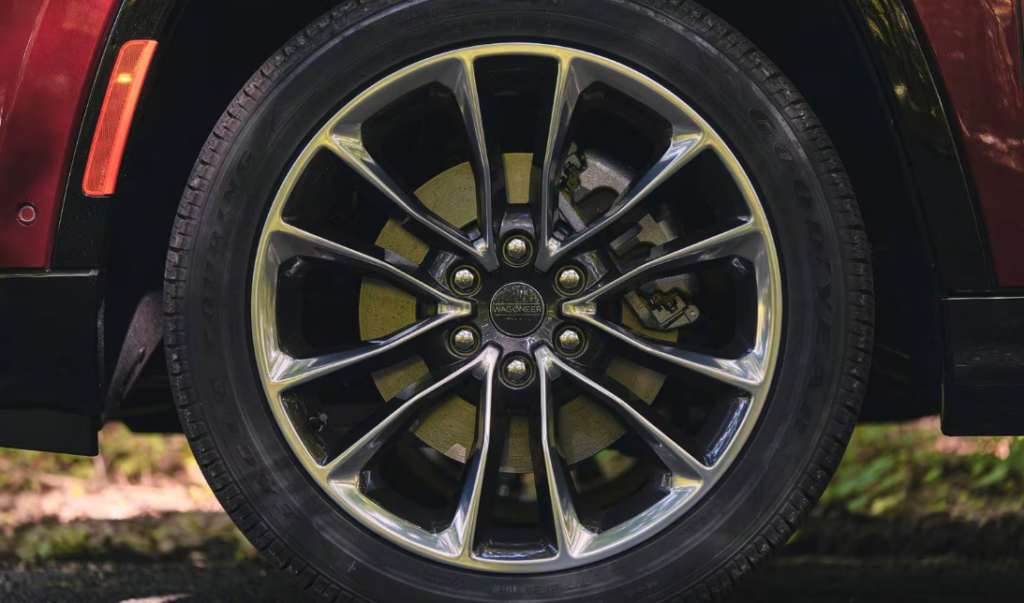
Features And Tech
User profiles
The Wagoneer allows up to five user profiles, loading individual preferences for seating, heating, and listening.
Wireless Apple CarPlay/Android Auto
Cable-free smartphone integration is just one standard attribute of an infotainment system that has over-the-air updates, responds to natural voice commands, and offers up to 11 USB ports, as well as Wi-Fi connectivity for up to eight devices.
Amazon Alexa compatibility
This infotainment system can also connect with Amazon’s digital assistant (order a picnic from Whole Foods, maybe), plus Amazon Fire TV — enabling passengers to access apps, TV shows, and movies.
4-wheel drive
Not many Wagoneer SUVs will clamber over rocks, but Jeep offers three 4-wheel drive systems of increasing sophistication.
ParkSense Automated Parking System
In a vehicle of this size, a self-parking feature for parallel and perpendicular spaces sounds like everyone’s first selection from the options list.
McIntosh audio
McIntosh is a top-flight American company and has developed this 19-speaker/950-watt surround-sound system specifically for Jeep. It even includes the audio company’s particular blue meters.
Quadra-Lift air suspension
Part of the optional Convenience Group, this feature includes the ability to raise the ride height in off-road situations or lower it for optimum aerodynamics and easier entries and exits.
Engine & Transmission
If our assumptions are correct, the 2024 Wagoneer/Wagoneer L lineup employs one engine in all variants. It’s a twin-turbocharged 3.0-liter 6-cylinder unit — configured not as the more common V6, but in the naturally smooth inline arrangement. Output is 420 horsepower and 468 lb-ft of torque, which goes through an 8-speed automatic transmission to either the rear wheels in standard form, or to an optional 4-wheel drive system. Maximum towing ability is an impressive 10,000 pounds.
